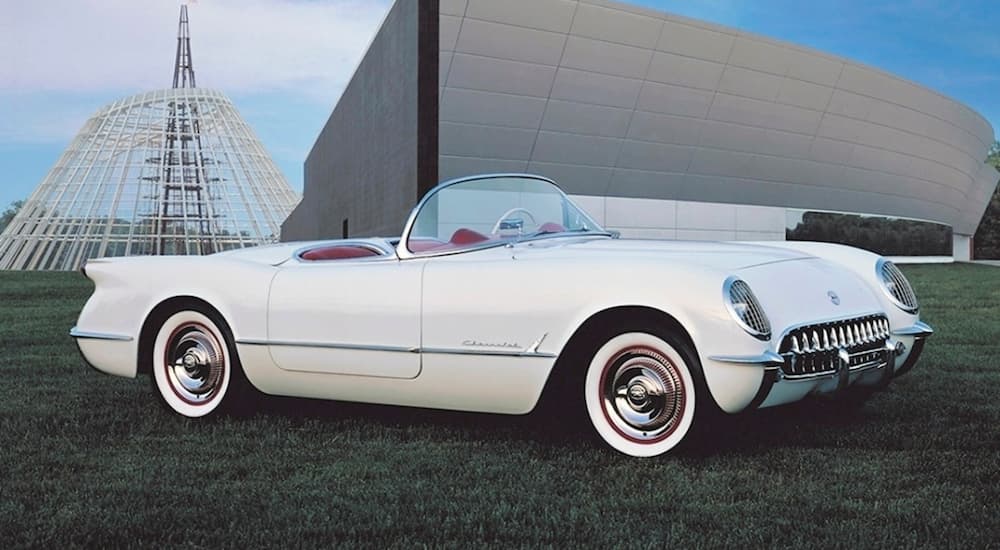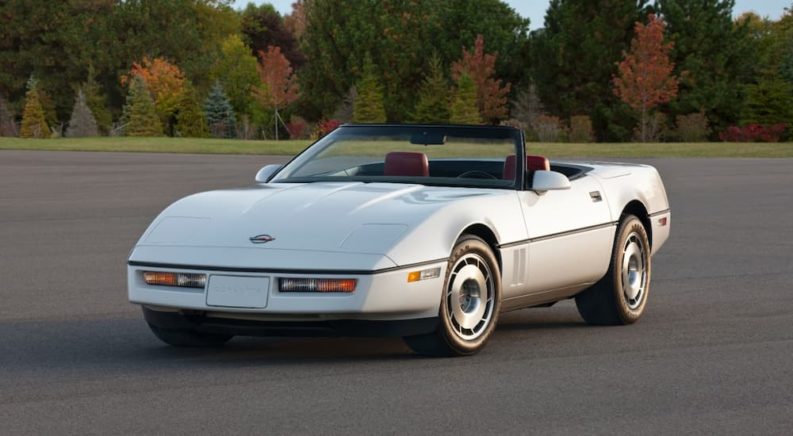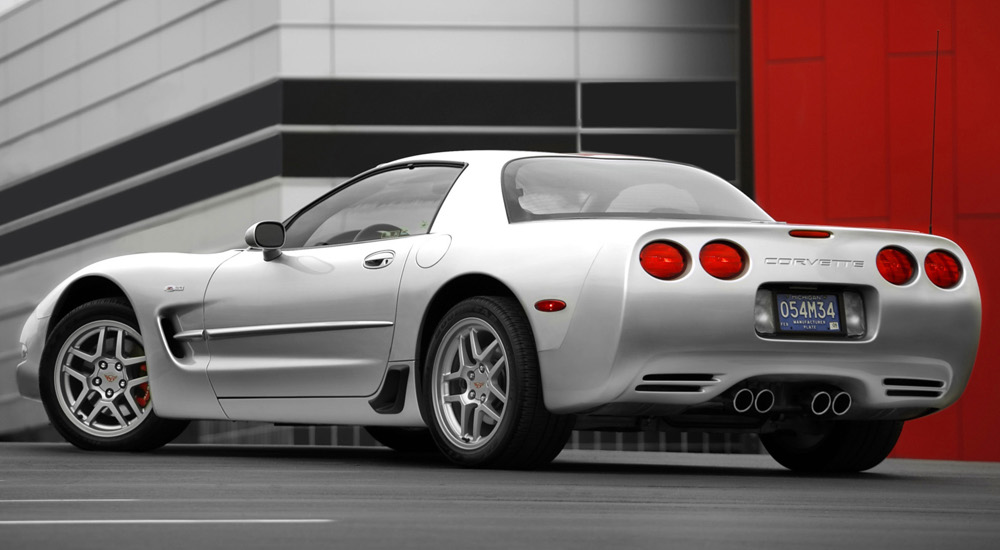Once in a while, a car so special comes along that it parks right in the heart of the automotive zeitgeist. Very few models manage to not only sell well and evolve over decades but earn their way into coveted collector’s item status. One such car became the epitome of American muscle. Step foot onto any Chevy dealer lot and you will find the latest Corvette parked front-and-center in their showroom, captivating the attention of any enthusiast.
Let’s take a stroll down memory lane and reminisce on models new and old—and the Corvette’s journey to becoming “America’s Sports Car”. With the Corvette’s 70th birthday right around the corner, why not glance back at how this beauty earned its stripes?
A Star Is Born
The year was 1953. The US car market was sizzling hot, turning the city of Detroit into the epicenter of 50s Americana. Founded in 1911, Chevrolet was always at the forefront of automobile innovation and paved the way for US automakers to compete on a global stage. Then brand manager Thomas Keating launched a program under the name Project Opel, setting out to design a model for General Motors to compete with the onslaught of British sports cars like the E-type Jaguar and the Austin-Healey.
The prototype, a fiberglass 3.9-L six-cylinder engine with a two-speed automatic transmission, debuted at the GM 1953 Motorama car show in New York City. The first run included only 300 cars, all bearing the same glossy white exterior and bright red interior. The initial response wasn’t explosive, but then again, this was uncharted territory for the automaker.
By the following year, Chevy decided to take the plunge and expand production of its newest model. The 1954 Corvette became available in three new exterior colors (black, red, and blue) and offered an improved six-cylinder engine, delivering an additional five horsepower. However, the climb to success for the Corvette was still painfully slow, and Chevy only managed to sell 3,640 units—despite the assembly line’s capacity to build 10,000 per year. Growth would be slow but steady, but that didn’t impede Corvette’s ambitions.

First Generation
Not wanting a repeat of 1954 sales, Chevy took a sharp turn in ‘55 and outfitted that year’s model with a much larger, 4.3-L V8. With a new-and-improved, 195-horsepower engine block, the car finally delivered the sports car performance of its competitors across the pond. Throughout the late 50s, the evolution continued to ramp up, going from the ‘57’s larger and more aggressive V8 with an output of 285 horsepower to rounding out the decade with a fuel injection system that catapulted engine output to 310 ponies. This was also the first year Chevy employed a four-speed version of the manual transmission.
In 1958, the front end was upgraded with dual headlights, and the interior became cozier with the addition of roll-down windows. Chevy would round out the first generation Corvette by 1962, with a massive 5.4-L V8 producing a hair-raising 360 horsepower. The first generation showed progress, and Corvettes began cropping up across more and more regions—gaining name recognition and respect.
The Stingray
Chevy decided to go full-throttle for the 1963 Corvette debut. Rolling off the assembly line with a sleek coupe body and rear suspension, the second generation Corvette had a new name tag: the Stingray. This model came equipped with unique, split windows and the option of an automatic or manual transmission. As most performance car drivers opted for manual, the Stingray stood out in its class by offering both a three-speed gearbox and the more-commonly-used, four-speed found in many cars of the decade. Finally, the Corvette could compete with the likes of the Alfa Romeo 33 Stradale and the Aston Martin DB5.
Chevy produced 199 Corvettes with the Z06 option, eventually becoming one of the most notorious collectors cars in history. The Stingray became the answer to the handful of British sports cars taking center stage in the automobile industry—while being available at a much more accessible price.
The 70s
In 1970, the pressure to keep increasing power dictated many more changes. Car culture shined bright in movies and TV shows, and enthusiasts obsessed over anything “American muscle.” The new and improved smaller V8 LT1 engine block became an option, producing a whopping 370 horsepower and over the next few years, Chevy phased out the egg-crate grill and side-fender grills, bringing forth a modern shape for the new decade. Think wedge-shaped noses and elongated doors resembling wings.
Some upgrades came as an answer to new federal requirements, like the addition of heavy front and back bumpers and catalytic converters in 1975 to accommodate the influx of unleaded gasoline. In 1977, the 500,000th Corvette was built—a white coupe with a red interior—which was a throwback to the very first builds.
The 80s
The Corvette was making a splash, beating out the Datsun 280ZX, Fiat Spider 2000, and Alfa Romeo Spider Veloce in performance tests. By 1984, the newest model produced a drag coefficient of 0.34, measuring 24% more aerodynamic than its predecessor and clocking a top speed of over 150 MPH. A convertible was released for the first time in 11 years, the RPO B2K twin-turbo package hit the market, and the 35th Anniversary Edition was offered in 1988.
The 90s
In 1990, dealerships across the country added the ZR-1 to their inventories. The ZR-1’s engine, designed by Lotus and built by Mercury Marine, featured a dual-overhead-cam 5.7-L V8. 375 horsepower delivered a hairraising 0-60 of 4.5 seconds and a top speed of 175 MPH. By 1994, the significance of the Corvette prompted the opening of a National Corvette Museum in Bowling Green, KY.
Two days shy of July 4, 1992, the one-millionth car rolled off the assembly line, matching the first 1953 Corvette’s white exterior and red interior. The special Grand Sport model arrived in 1996 as well.
The 2000s to Present
Corvette continued to make waves in the new millennium. On the 50th anniversary in 2003, Chevy launched the 50th Anniversary package with red paint, a two-tone shale interior, and special emblems. The following year, a commemorative package was produced to honor Corvette’s success at LeMans. Alongside all the celebratory models, Corvette kept improving the engine of newer passenger cars, with a total redesign of the Z06 that produced 505 horsepower and boasted 470 lb-ft of torque.
In 2006, they introduced the six-speed automatic paddle-shift transmission, as many sports car industry leaders found the happy medium between manual and automatic. The seventh-generation Corvette returned in 2013, once again as a Stingray. With the new generation came the induction of an all-aluminum body, an LT-1 V8 engine, and an exclusivity deal with Michelin tires. Rounding out the seventh generation in 2019, Corvette’s performance was at an all-time high.
The latest ZR-1 produced 755 horsepower and an impressive 0-60 time of just under three seconds. Finally, Chevy ditched the front-engine design, moving all the goodies behind the passenger compartment—an overdue change. The car’s evolution throughout the 2000s and 2010s focused on power and racing prominence at events like the Indy 500.
Celebrating the 70th Anniversary
To mark the occasion, 70th Anniversary models will be top-of-the-line. Available as both the coupe or convertible, it will feature dark-finish wheels with the 70th Anniversary center caps, red calipers, special badging on the exterior, and White Pearl Metallic or Carbon Flash Metallic as exterior paint options. Order a model with Satin Gray or Satin Black racing stripes.
The interior, with decadent leather upholstery with standout red stitching and a set of custom matching luggage, will also be included. What’s a true collector’s car without its share of branded accessories? Very few cars have had the staying power to sail through decades of redesign and production—and to do it as gracefully as Corvette. It’s worth keeping an eye on the future models, but don’t blink because they’re driving by fast.





